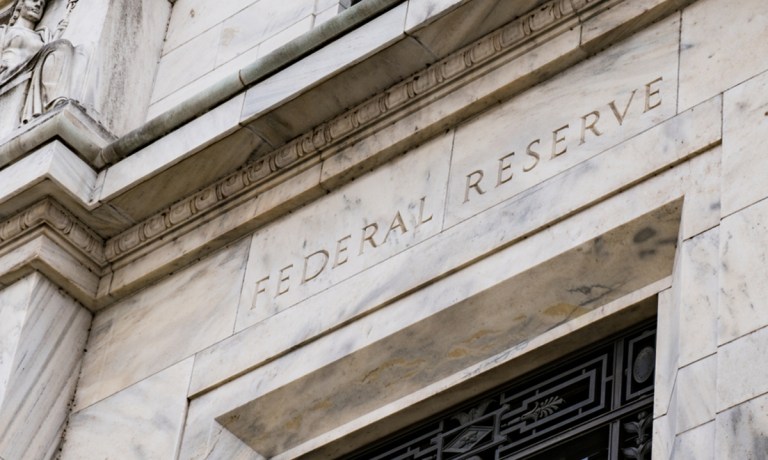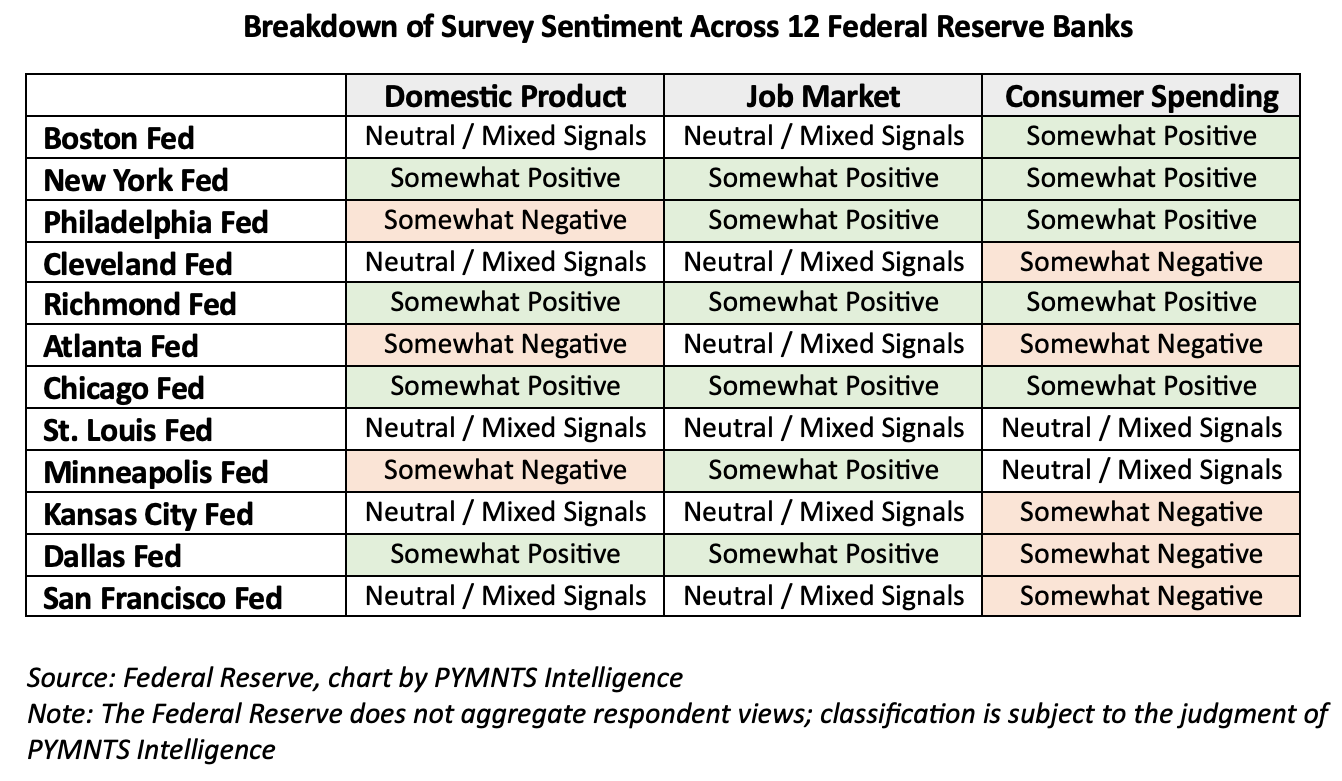
The Federal Reserve’s Beige Book — released eight times a year, with the latest report debuting Wednesday (Oct. 23) afternoon — offers up a qualitative take on the state of the U.S. economy, spanning 12 districts nationwide.
And this time around, amid the puts and takes, the general consensus among banks and businesses is that the economy is slowing. Margins are pressured a bit.
And though the longer term outlook may be an optimistic one, even “despite elevated uncertainty,” the all-important driver of the U.S. economy — that would be the U.S. consumer — is facing some headwinds.
“On balance, economic activity was little changed in nearly all districts since early September, though two districts reported modest growth,” per the Fed.
“Activity in the banking sector was generally steady to up slightly, and loan demand was mixed, with some districts noting an improvement in the outlook due to the decline in interest rates,” the report said.
As for consumer spending, the general picture is a mixed one, with at least some districts, “noting shifts in the composition of purchases, mostly toward less expensive alternatives.”
There are hints, too, that inflation’s still an issue. As the Fed wrote in the report: “multiple districts reported that input prices generally rose faster than selling prices, compressing firms’ profit margins.”

Each district weighs in with their observations of trends, which PYMNTS Intelligence has noted in the accompanying chart — a sort of score card. With a nod to consumer spending, the chart notes that seven districts have put forth neutral to negative signals on consumer spending; five districts have said that the spending trends have been somewhat positive. The sentiment, then, leans toward the downside.
Anecdotes abound. The Philadelphia Fed said that “On balance, business activity in the Third District continued to decline slightly. Consumer spending continued to fall despite a rise in retail promotions focused on driving higher customer traffic … On balance, retailers (nonauto) continued to report modest decreases in real sales.” Within financial services, the same district reported that “credit card volumes changed little for a second consecutive period — volumes grew modestly during the same period one year ago.”
And from New York, “consumer spending increased slightly this period. Department store contacts in the region reported growing sales in recent weeks after muted sales during the previous period. Consumers have been more discriminating, trading off less quantity for higher quality, particularly for accessories such as handbags and shoes.”
Overall, as PYMNTS Intelligence has noted, reports from seven districts (and thus a majority of the reporting districts) included specific mentions of increased price sensitivity. Importantly, the New York Fed, a center of banking and finance, reported that “credit standards tightened for business loans, consumer loans, and commercial mortgages. Deposit rates continued to decline noticeably, and delinquency rates continued to rise for all loan types.”
The businesses themselves seem to be taking what might be arguably described as a wait-and-see approach. “Many contacts reported hesitancy in decision-making due to heightened uncertainty surrounding the presidential election. Looking further ahead, businesses were now somewhat optimistic conditions would improve,” said the report. At least some firms said that there remained hesitancy to hire more staff in the face of that same election uncertainty.
Taken altogether, the Fed’s Beige Book underscores the PYMNTS Intelligence ongoing survey findings of the paycheck-to-paycheck economy: This month, we found that two-thirds of consumers live within that definition. Elsewhere, we reported that many consumers have been trading down a bit in recent months when they shop with retailers, in some cases shopping with discount retailers. Though overall, as the banks have noted this earnings season, shoppers are resilient, there is a bit of stress for lower-income segments. Time will tell if the “somewhat optimistic” mindset of the businesses note above will play out in the form of increased sales.